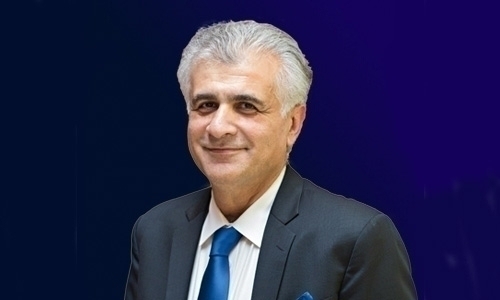The feat of Louvre Abu Dhabi
The Louvre Abu Dhabi, the first and only museum to bear the Louvre name outside France, presents around 600 pieces in a modern, light-filled structure in harmony with its desert-island setting. This feat of art and history stands unparalleled in this region and it is expected to awe and surprise all visitors with its sophisticated and unique experience.
Flagged as “the first universal museum in the Arab world”, it sits on the low-lying Saadiyat Island, a developing tourism and culture hub 500 metres off the coast of the United Arab Emirates’ capital.
It is the first museum on the island, also the site of the Guggenheim Abu Dhabi, which is still under construction. The museum design, by France’s Pritzker prize-winning architect Jean Nouvel, conjures up the image of an Arab medina as seen through the eyes of a contemporary cinematographer.
The opening comes a decade after France and the UAE agreed to a 30-year partnership initially reported to be worth $1.1 billion, including nearly half a billion dollars for the rights to the Louvre brand alone.
Under the 30-year agreement, France provides expertise, loans works of art and organizes temporary exhibitions -- in return for one billion euros ($1.16 billion).
The Louvre in France takes a 400-million-euro share of that sum for the use of its name up to 2037.
A silver-toned dome with perforated arabesque patterns appears to float over the white galleries, creating what Nouvel describes as a “rain of light”.
To reach the ground, each ray of light must cross eight layers of perforations, creating a constantly shifting pattern that mimics the shadows cast by palm trees or the roof of a traditional Arab market.
The Louvre Abu Dhabi is the first of three museums to open on Saadiyat Island, where the UAE plans to launch the Guggenheim Abu Dhabi, designed by Frank Gehry, and Norman Foster’s Zayed National Museum.
Some five percent of the museum is dedicated to contemporary and modern art, including a monumental piece by China’s Ai Weiwei. His 23-foot-high “Fountain of Light” is a spiraling structure draped in crystals inspired by communist plans for a massive monument that never actually saw the light of day.
Among the exhibits are an early Koran, a gothic Bible and a Yemenite Torah, facing each other and open at verses carrying the same message.
Jean-Luc Martinez, president of the Louvre in Paris, said the new museum was designed “to open up to others, to understand diversity” in “a multipolar world”.
The Louvre Abu Dhabi is displaying more than 235 works of art from the Emirati collection, including Edouard Manet’s “The Gypsy” and works by Dutch abstract artist Piet Mondrian and Turkey’s Osman Hamdi Bey.
For the next 10 years, the Paris museum will lend works to its Abu Dhabi partner on a voluntary basis, for a maximum of two years.
Thirteen top French museums, including the Musee d’Orsay and the Palace of Versailles, will also loan the Louvre Abu Dhabi 300 works of art over the first year.
These include Leonardo da Vinci’s “La Belle Ferronniere”, “Napoleon Crossing the Alps” by Jacques-Louis David, and a self-portrait by Vincent Van Gogh.
For its permanent collection, the museum has acquired hundreds of pieces, dating from the earliest Mesopotamian civilizations to the present day.
The authorities have put in place strict measures to protect the art from the heat in a country where summer temperatures soar well above 40 degrees Celsius (more than 100 degrees Fahrenheit).
The artworks are also guarded by Emirati forces in coordination with French experts.
Abu Dhabi isn’t alone in the region in putting a new emphasis on cultural attractions. Both Muscat and Dubai have recently opened opera houses, and Nouvel himself has designed a new National Museum for Qatar. But what marks out Saadiyat Island and the Louvre in particular is the scale of its ambition in the face of what is, let’s be clear, a significant challenge.
Massive growth in tourism has brought not only an increasing, but also a far more culturally diverse audience.
Related Posts

